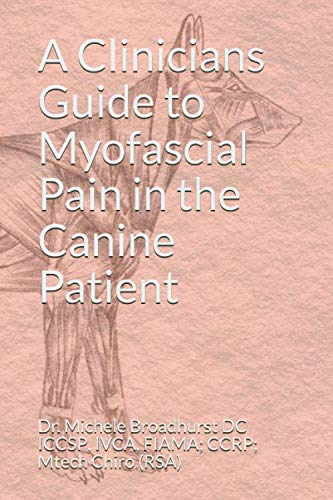Laurie's Blogs.
Aug 2020
Book Review: A Clinicians Guide to Myofascial Pain in the Canine Patient
Hey all! For this blog, I wanted to do a bit of a book review. This time, it’s for the book entitled:
A Clinicians Guide to Myofascial Pain in the Canine Patient by Dr. Michele Broadhurst.

Dr. Broadhurst is a chiropractor, trained in South Africa and additionally certified in animal chiropractic, canine rehabilitation, as a chiropractic sports physician, and a chiropractic acupuncturist. She currently resides in Colorado, USA.
The book is a very readable 224 pages, with 378 references. (I’m a reference gal! I love lots of references!) It is laid out as a bit of a manual and assumes that the reader has thorough training in anatomy and physical examination skills.
The fundamental early chapters cover muscles and trigger points, fascial, myofascial pain syndrome in the canine, palpation, and diagnosis. From there Treatment is discussed, focusing on myofascial trigger points. Needling us and technique is discussed and information is presented regarding the difference between dry needling and acupuncture. Other tools used to treat myofascial triggers points are also examined, most notably shock wave therapy and laser therapy.
There is discussion about practitioner integration and legislation as well as needle safety and considerations. From there, the topics turn to body parts and muscles and where to find myofascial trigger points and how to stretch some of the affected muscles after treatment.
Within the chapters on the specific muscles, one must assume that human accounts of referral pain patterns were used, as there really is very little way of knowing where an animal might be experiencing pain in regards to a trigger point. This is not a criticism however, I think that the use of human information gives us the best available evidence when no other exists.
My only critique is that from the title I was expecting more in the way of myofascial release techniques (manual therapies). However, there is plenty to cover on the topic of myofascial trigger points alone and their treatment using needles, shock wave, or laser!
I would recommend this book as a reference for any rehab practitioner, whether they use needles clinically or not! It’s is available on Amazon as well as by e-mailing the author from her own website: www.drmicheleb.com.
Who doesn’t need another book??? I’m always a sucker for a textbook!


